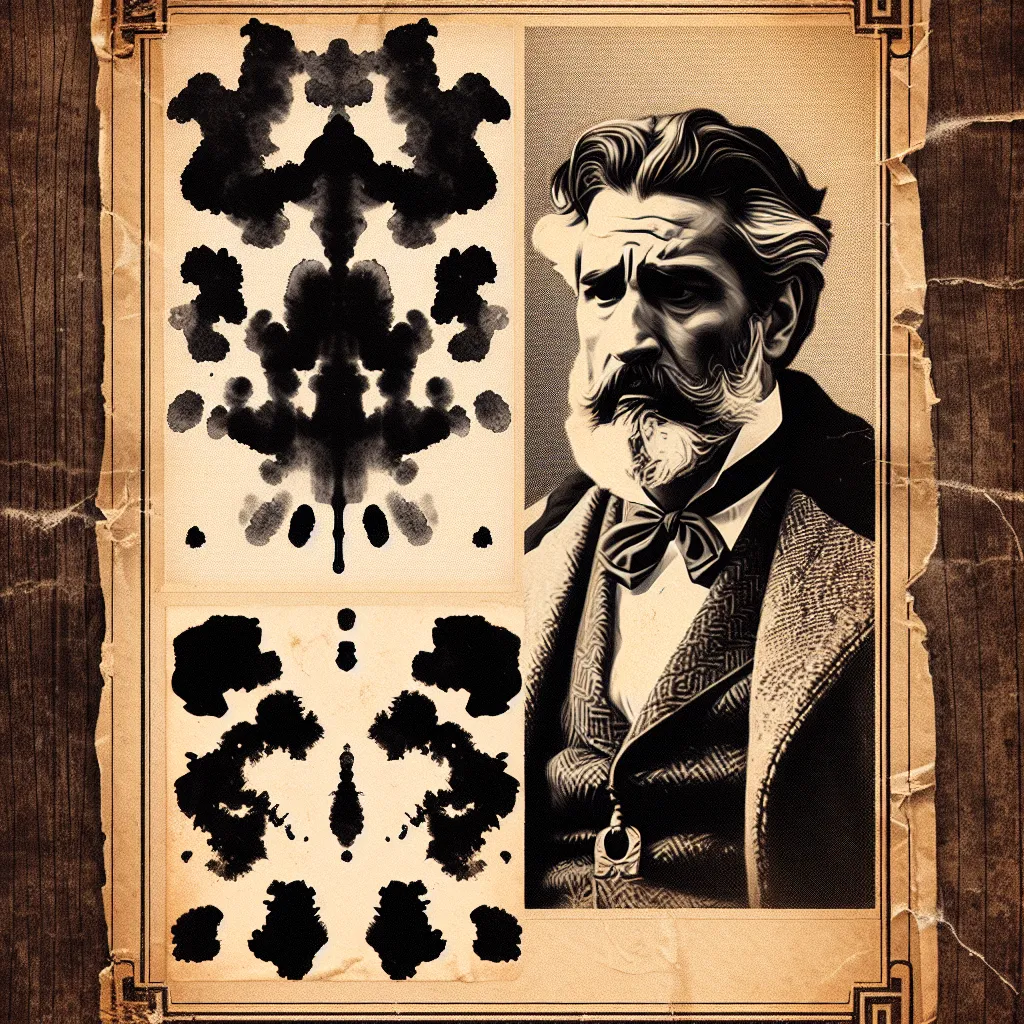Projective tests have long been utilized within the field of psychology to assess personality traits and uncover the underlying motivations, fears, and desires of individuals. Among these, the Rorschach Inkblot Test and the Thematic Apperception Test (TAT) are two of the most iconic and widely-used projective assessments. Their continued use in psychological settings speaks to their enduring relevance in understanding the complexities of human personality.
The Rorschach Inkblot Test, developed by Swiss psychiatrist Hermann Rorschach in the early 1920s, is a series of ten unique inkblot cards designed to be a window into the psyche. The test is rooted in the idea that individuals project their own unconscious thoughts and feelings onto ambiguous stimuli. When presented with an inkblot, the respondent is asked what they see. Their responses are believed to reveal the inner workings of their personality, emotional functioning, and sometimes, mental health disorders.
The interpretative process of the Rorschach involves a complex scoring system where the examiner considers the content of the response, the location of what is seen in the inkblot, the determinants (such as color, form, shadow, or movement), and the originality of the response. What makes the Rorschach particularly interesting is its ability to capture aspects of personality that are not easily expressed through verbal communication, thus providing a holistic view of the individual.
On the other hand, the Thematic Apperception Test, created by Henry A. Murray in the 1930s, explores the underlying dynamics of personality through storytelling. The TAT consists of a series of ambiguous pictures, each intended to evoke a narrative response from the test-taker. Participants are asked to create a story that describes what is happening in the image, what led up to the scenario, what the characters are thinking and feeling, and what the eventual outcome will be.
The stories concocted during a TAT session are then analyzed to understand themes of need, motives, and patterns of response that the individual exhibits. This insight can provide psychologists with a deeper understanding of a person’s view of the world, their interpersonal relationships, and their sense of self.
Both Rorschach and TAT emphasize the importance of subjective interpretation. The meaning derived from the test responses is largely influenced by the individual’s unique perceptions and thoughts. Proponents argue that this allows for the assessment of components of personality that are difficult to quantify or capture through self-report measures, such as inventories and questionnaires.
However, projective tests have not been without controversy. Critics argue that interpretations can be highly subjective, leading to inconsistency in results. Additionally, the validity and reliability of projective tests have been questioned, given the difficulty of standardizing such deeply personal responses. Nevertheless, many practitioners value these tests for their ability to generate rich qualitative data and to tap into non-conscious aspects of personality.
To harness the full potential of the Rorschach and TAT, practitioners must undergo extensive training. Interpreting the data gleaned from these tests requires sophisticated understanding and skill, which is why qualified professionals take caution to ensure they do not over-interpret or impose their own biases onto the responses.
Despite the complexity and potential for misuse, when administered and interpreted correctly, projective tests offer a level of depth that can be particularly enlightening in certain circumstances. They are often used complementarily with other assessment methods to provide a more thorough personality evaluation. In contexts such as forensic assessments, determining an individual’s fitness for a specific occupational role, or gaining insights in therapy, the Rorschach and TAT can provide valuable information that might otherwise remain hidden.
One of the key strengths of projective tests lies in their non-threatening nature. Because subjects are not directly asked to reveal their inner thoughts or feelings, but instead to engage with seemingly unrelated tasks like describing an inkblot or telling a story, they might be more open and less guarded in their responses. This can be especially important when working with individuals who are resistant or hesitant to discuss their inner experiences.
In terms of clinical practice, the Rorschach and TAT are particularly beneficial for identifying thought disorders, complex trauma histories, and subtle emotional disturbances. They can serve as a starting point for therapeutic interventions, as the narrative and images provided by the client offer a tangible working material for both therapist and client to explore together. Acknowledging and discussing the projections can foster a better understanding between the client and the therapist and facilitate a stronger therapeutic alliance.
The application of the Rorschach and TAT extends beyond clinical settings. In educational psychology, these assessments can help to understand a child’s emotional and cognitive development. In organizational psychology, they can shed light on leadership qualities or team dynamics. The versatility of projective tests makes them an invaluable tool in a variety of contexts.
Despite the debates that surround projective testing, there is no denying the fascination they have held in the field of psychology. The Rorschach and TAT continue to be a subject of research, with psychologists seeking to refine scoring systems and interpretative methods to enhance their utility and accuracy.
In conclusion, projective tests such as the Rorschach Inkblot Test and the Thematic Apperception Test play a vital role in the assessment of personality. They offer a unique and profound look into the personal narratives and unconscious aspects of individuals that other tests may not capture. While not without limitations, when used appropriately, Rorschach and TAT can yield rich, nuanced insights that provide added dimensions to the understanding of personality structure and dynamics. As tools in the psychologist’s assessment kit, they embody the complex, interpretive nature of psychological assessment and remain significant in the ongoing endeavor to comprehend the intricacies of the human mind.



Leave a Comment